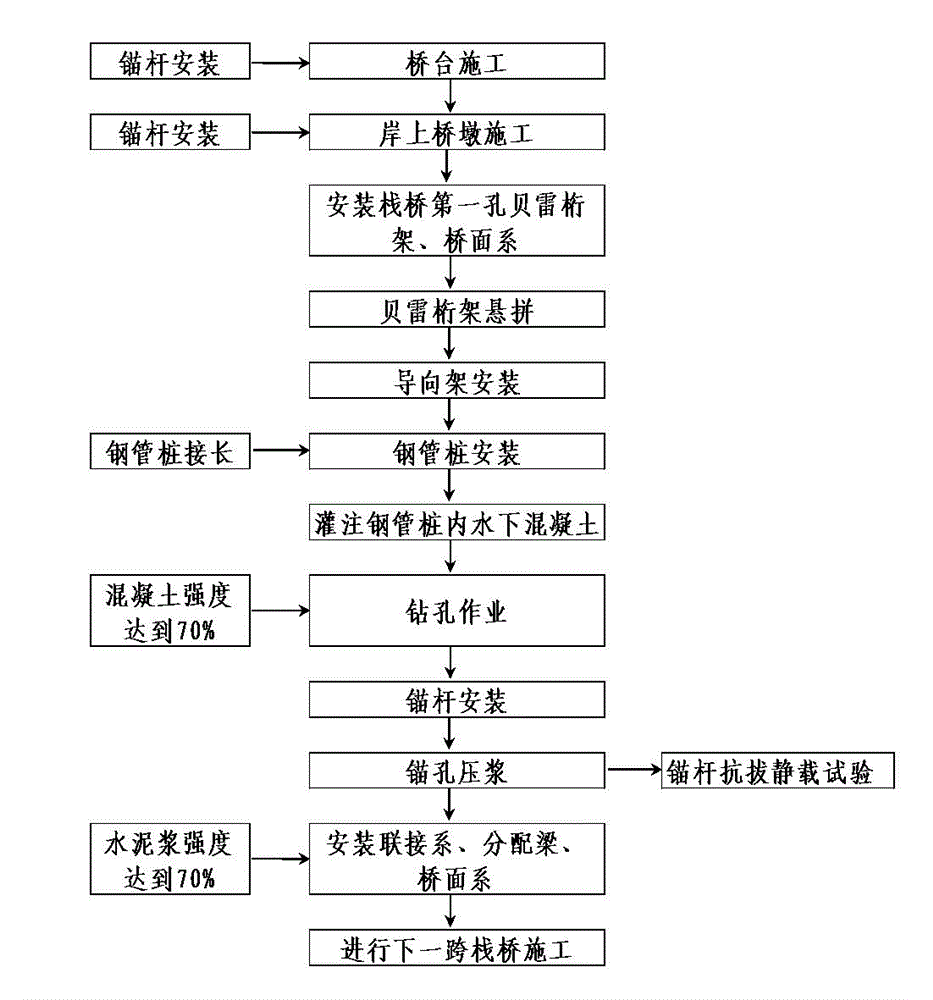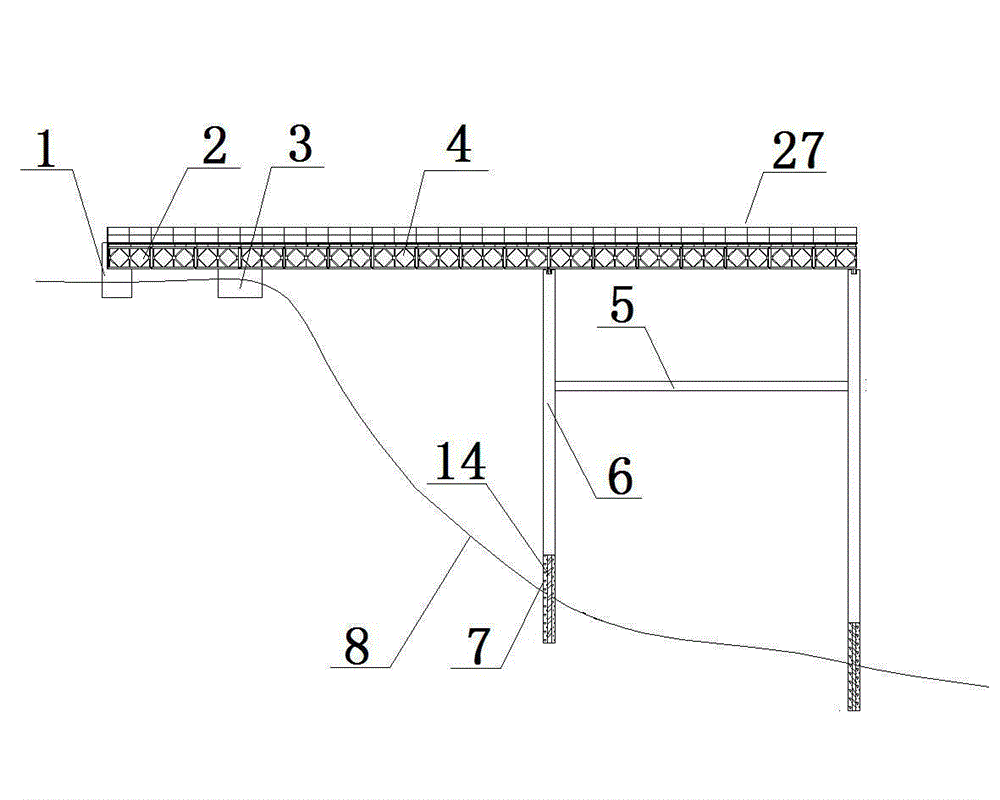Elevated trestle bridge construction method on covering-free steep bare rock in deepwater and rapid stream
A technology without covering layer and construction method, applied in bridges, bridge construction, infrastructure engineering, etc., can solve the problems of high cost, long construction period, heavy workload, etc., achieve low cost, short construction period, and reduce construction risks Effect
- Summary
- Abstract
- Description
- Claims
- Application Information
AI Technical Summary
Problems solved by technology
Method used
Image
Examples
Embodiment
[0033] Embodiment: This embodiment specifically relates to a steel pipe pile anchoring construction method on steep bare rock without covering layer in deep-water rapids. Construction of high-level trestle in water under inclined hard bare rock hydrogeological conditions. This embodiment will take the Qianjiang Super Bridge Project as an example to describe in detail. The Qianjiang River is a mountainous river with a large flow rate and rapid flow. The maximum flow rate reaches 3.21m / s. The riverbed has no cover layer. 80 MPa, extending all the way to the shore, the riverbed within 65m near the shore is steep, the rock face is inclined at 35-53°, and the rock face at the pier in the water is inclined at about 25°, and the river bed is undulating and full of stalagmites. In order to make it easier for construction workers to enter the bridge piers in the center of the river for construction, it is necessary to build trestle bridges leading to the bridge piers on the bank slopes...
PUM
 Login to View More
Login to View More Abstract
Description
Claims
Application Information
 Login to View More
Login to View More - R&D
- Intellectual Property
- Life Sciences
- Materials
- Tech Scout
- Unparalleled Data Quality
- Higher Quality Content
- 60% Fewer Hallucinations
Browse by: Latest US Patents, China's latest patents, Technical Efficacy Thesaurus, Application Domain, Technology Topic, Popular Technical Reports.
© 2025 PatSnap. All rights reserved.Legal|Privacy policy|Modern Slavery Act Transparency Statement|Sitemap|About US| Contact US: help@patsnap.com



